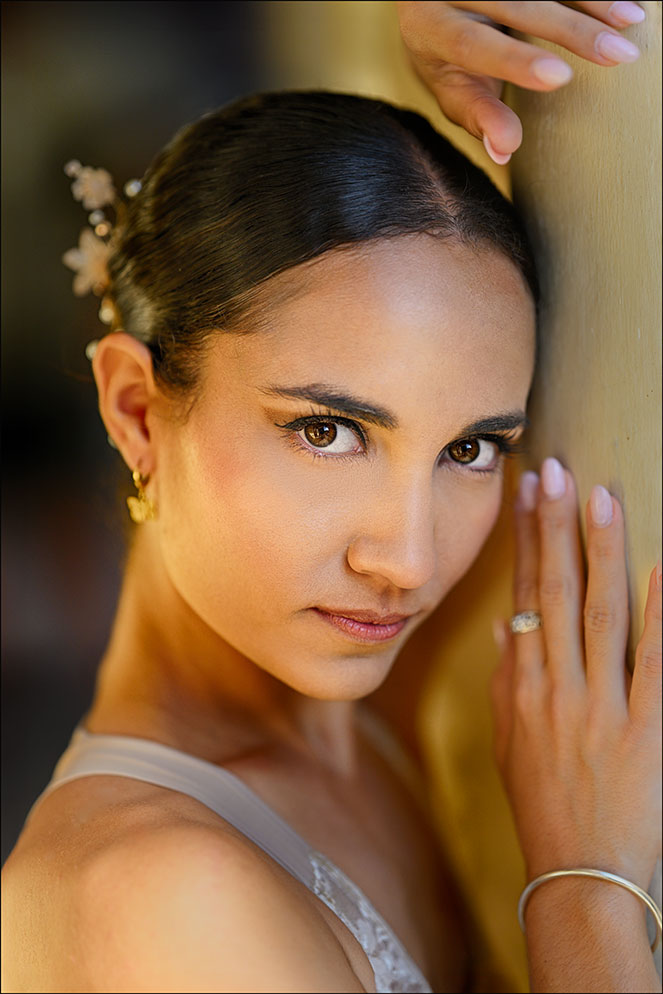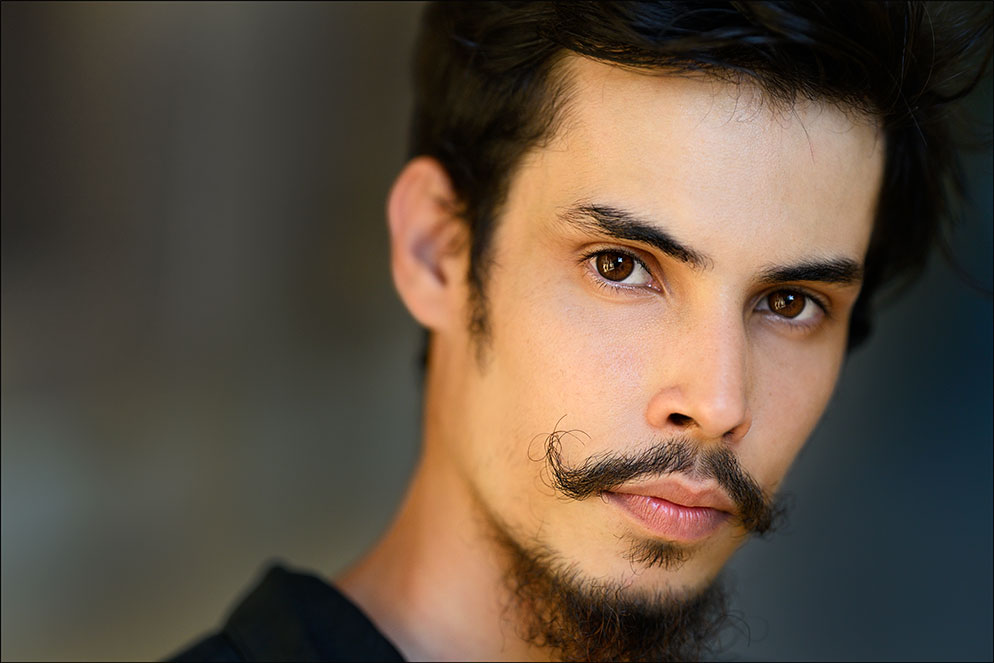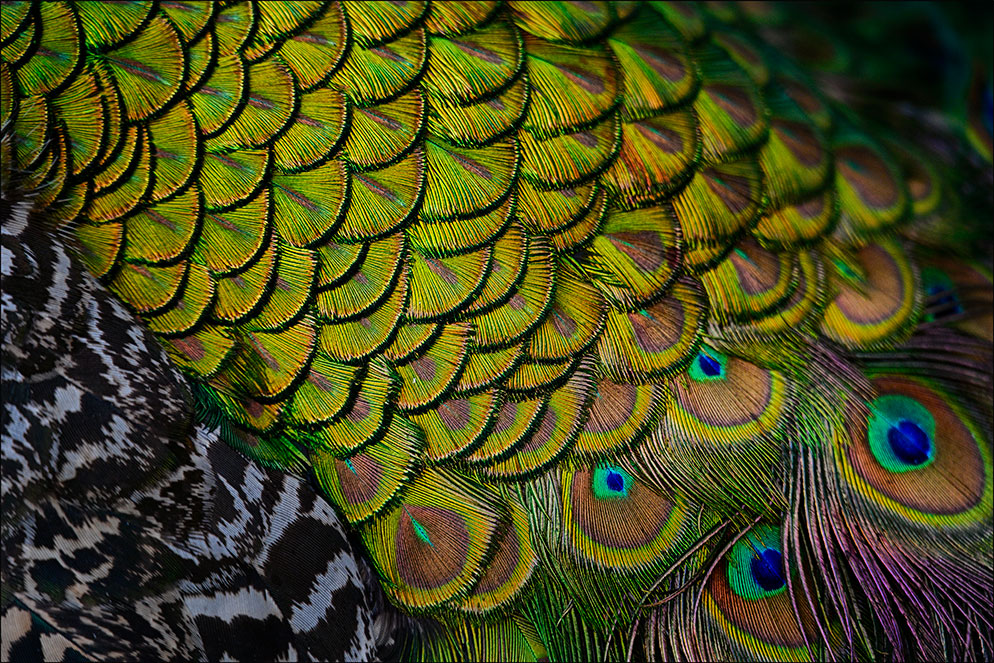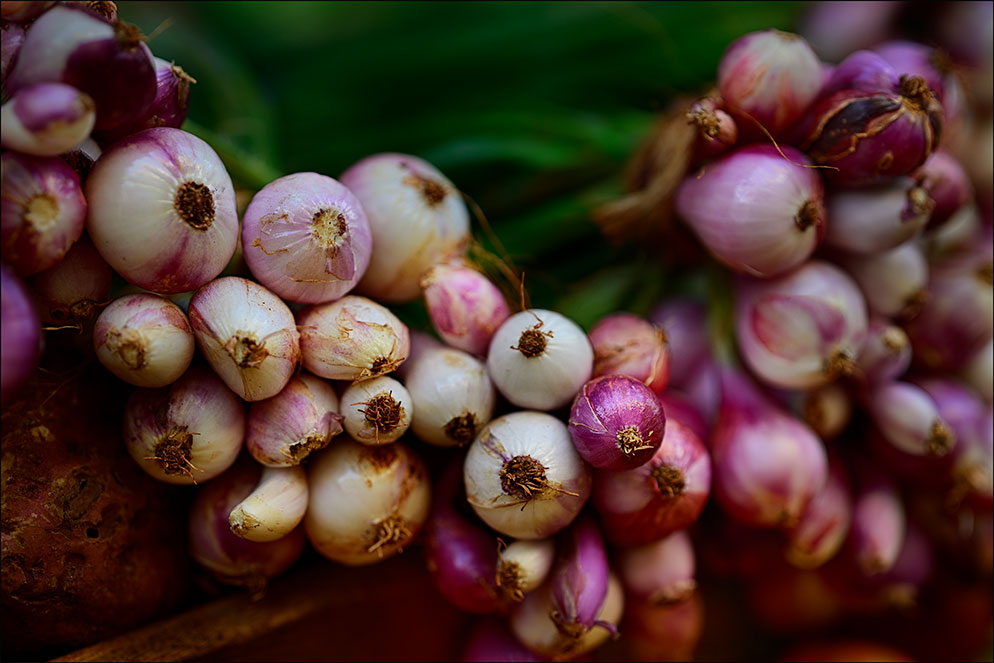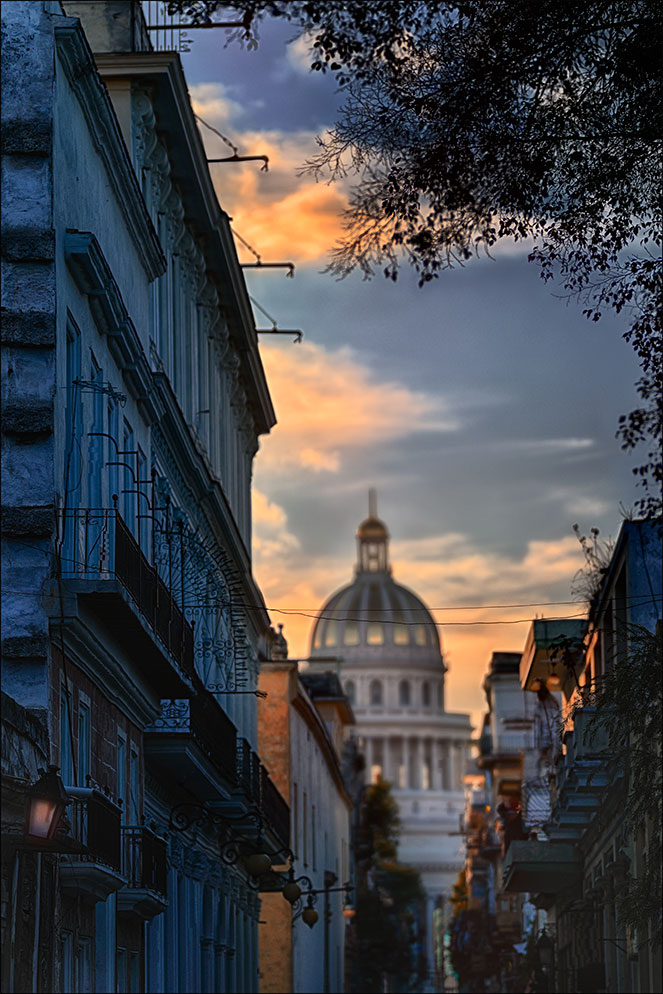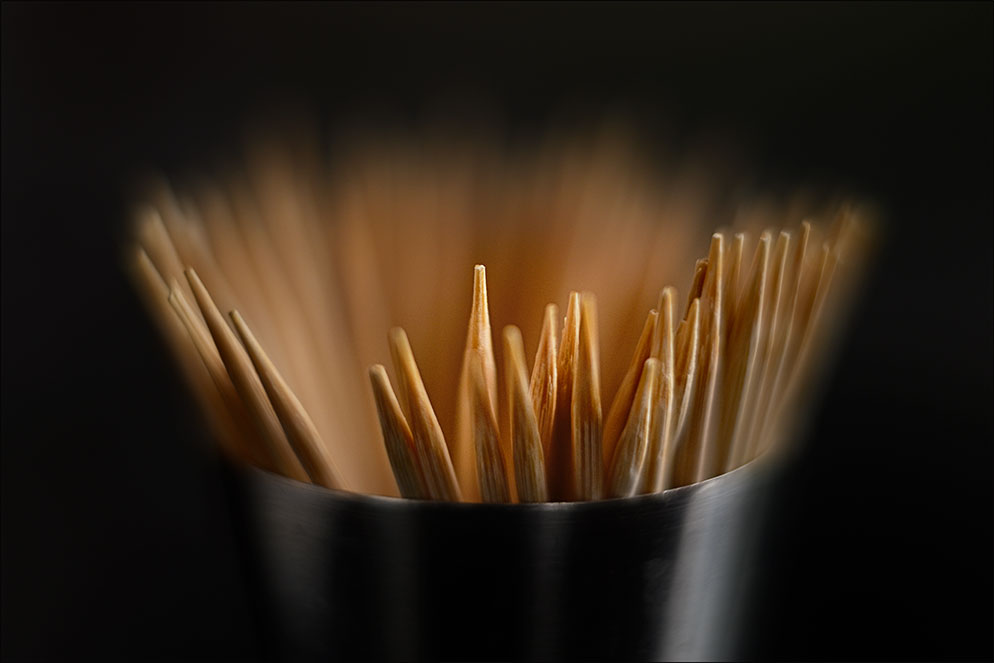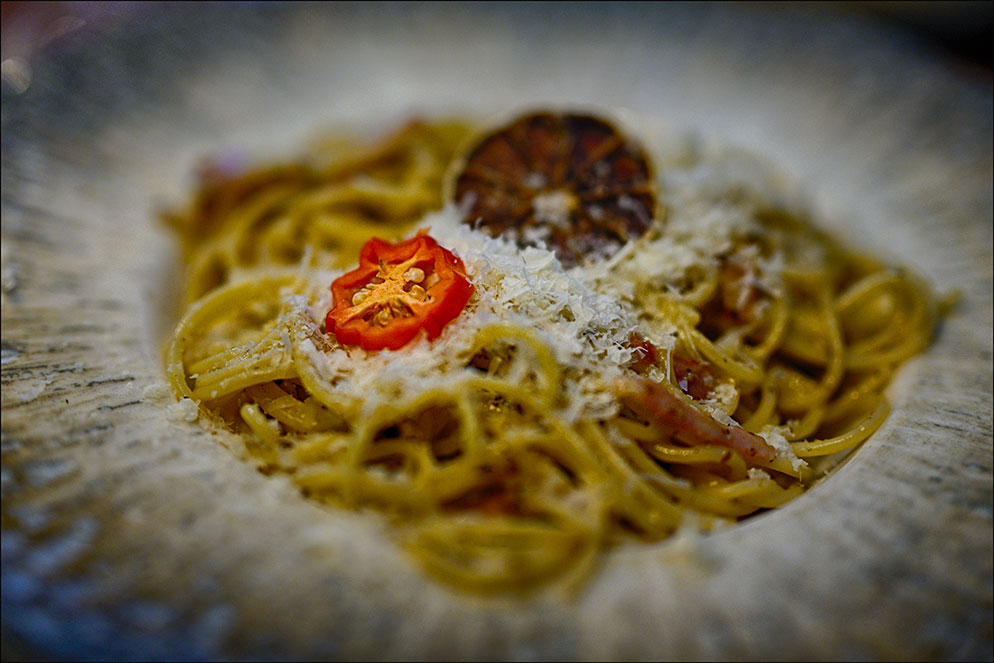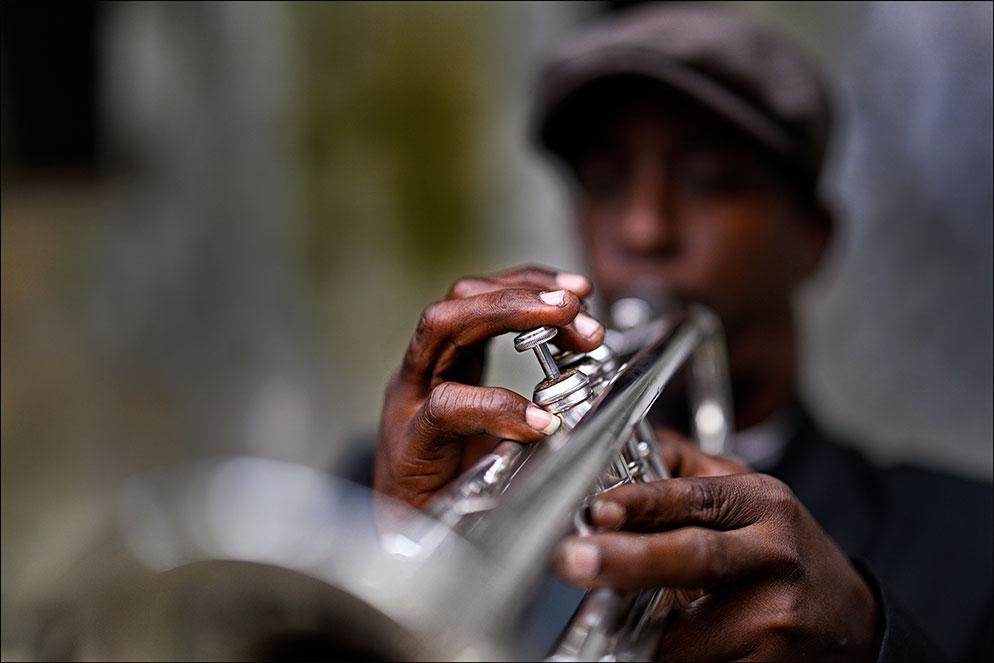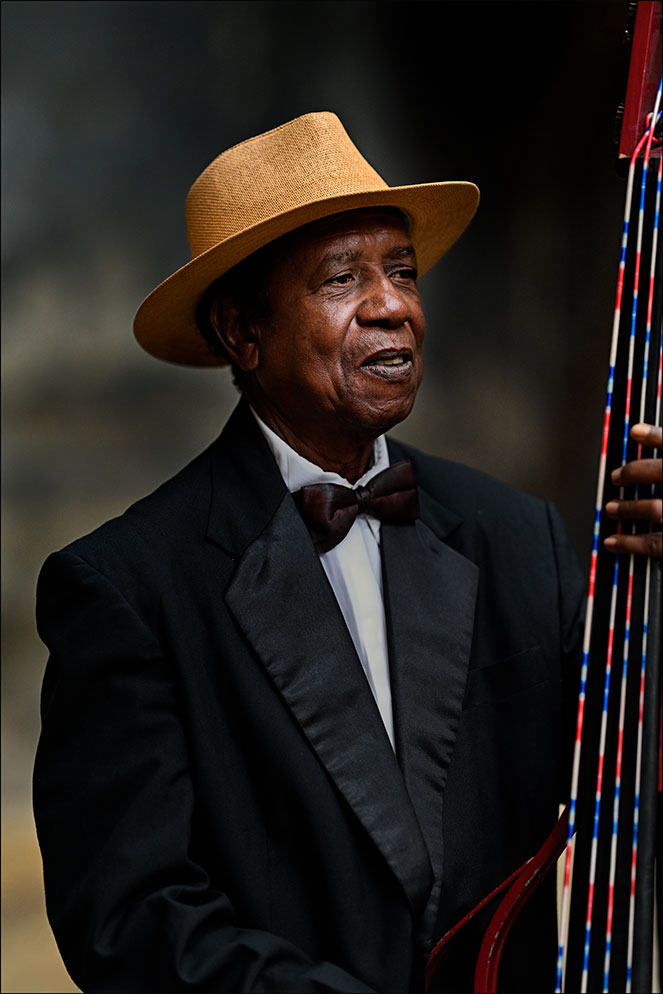Z f: A Stylish, Full-Frame, High-Tech Mirrorless That’s Designed to Inspire
Vincent Versace took this image of a dancer for the Cuban National Ballet at a moment when she didn’t think he was going to take a picture. “It’s not a deliberate look, not a pose—it’s just her. I saw it, and I got it, and I love moments like that—when the photo takes me.” Z f, NIKKOR Z 135mm f/1.8 S Plena, 1/4000 second, f/1.8, ISO 2200, aperture-priority exposure.
Vincent Versace arrived in Cuba more than ready to photograph with what he judged to be an ideal pairing of Nikon gear: the versatile and inspiring Nikon Z f mirrorless camera and the groundbreaking Plena (NIKKOR Z 135mm f/1.8 Plena) lens.
When we talked with him about that dynamic duo and his Havana images, he began with a rapid-fire, straight-to-the-point report: “The Z f’s the best walk-around camera. Absolutely ideal, not scary. When I pull it up, nobody thinks I’m a full-time photographer, just a guy taking happy snaps. It doesn’t even look like a mirrorless camera—more like an old-timey camera you chose to go out shooting with. Which can’t be any further from the truth because it’s got the Z 9 processor and focusing system, and its color reproduction, right out of the camera, is just gangbusters. Nikon color is what you buy a Nikon for. Shoot RAW, process in Nikon NX Studio—Nikon’s RAW Processing software—and save as a TIFF, that’s mostly what I do.
“And then there’s the Plena. Nikon absolutely rules bokeh—nobody can do bokeh like Nikon can, and the Plena is the prettiest lens Nikon’s ever made.”
Vincent’s use of “prettiest” referred not only to the Plena’s stunning, circular-bokeh rendition of background points of light, but even more to the beautiful transition effect the lens accomplishes. “The pretty part to me is how it makes the transition from the point of sharpness to the point of complementary blur,” he says. “I judge the bokeh of a lens by how it handles ‘in focus’ to ‘in blur,’ because that transition is what creates the poetry and beauty of an image. To me, bokeh is the quality of the ramp of blur from the point of focus to complete defocus.”
And with that summation/introduction to his Havana shoot, it was time to talk pictures.
Motion and Emotion
Z f, NIKKOR Z 135mm f/1.8 S Plena, 1/4000 second, f/1.8, ISO 720, aperture-priority exposure.
“A big advantage of the Plena is that the minimum focusing distance—a bit over two-and-a-half feet—is just where I want it for a portrait,” Vincent says. “I can come in and get beautiful blur and the right balance of distance, look and composition.”
He especially likes to photograph dancers, actors and other performers because “they know how move, how to hit their marks, and they’re generally emotively expressive. Dancers—particularly dancers who are trained at the level of those in these photographs—will have a thought, and it instantly ripples across their faces. Expression and movement seem to work together in the moment. The photos I took of the dancers in Havana are all about their eyes—and the combination of the Z f’s Eye AF and the Plena’s beautiful sharp-to-soft transitions.”
Z f, NIKKOR Z 135mm f/1.8 S Plena, 1/4000 second, f/1.8, ISO 1250, aperture-priority exposure.
None of the dancers spoke English and Vincent doesn’t speak Spanish. “I speak Silly,” he says. “It’s often how I get reactions. At one point the male dancer and I were having a silent, macho staring contest, playing back and forth with expressions. It was him reacting to me, reacting to him, reacting to me—got that? He got into it right away.”
On Location
Cuba is one of Vincent’s favorite places for photography; he’s been there over 20 times. Maybe it’s because, as he’s said, “If I stand still long enough in the same place in Cuba, 1962 will show up. And so will the modern Cuba.”
On the first day of any visit, he likes to go to the Hotel Nacional De Cuba. “It was a big draw for the celebrities of long ago who stayed and performed there. It’s got a beautiful view, so I’ll enjoy an 11-year-old rum and look at the sunset and the peacocks—there are about ten of them that have the run of the grounds.”
Z f, NIKKOR Z 24-200mm f/4-6.3 VR, 1/125 second, f/6.3, ISO 3200, aperture-priority exposure.
Nikon absolutely rules bokeh—nobody can do bokeh like Nikon can, and the Plena is the prettiest lens Nikon’s ever made.
Vincent got as close to one of the peacocks as the bird would allow without getting upset and zoomed his lens to full 200mm “to avoid any peacock problems.” The pattern was interesting, the colors good, and just because he’s in Cuba doesn’t mean that things that aren’t necessarily typically of Cuba are off the table. Not peacocks, and not breakfast choices either.
Z f, NIKKOR Z 135mm f/1.8 S Plena, 1/320 second, f/1.8, ISO 200, aperture-priority exposure.
“Markets tended to be on the streets when I was there,” he says, “and the pattern of the onions caught my attention, but the main reason was a conversation I had that morning about the next day’s breakfast. If I wanted an omelet tomorrow—and I did—I needed to buy some onions today. Once something catches my eye I try to make it an interesting photograph, and here I went for complementary colors and shapes and patterns. I also like that it’s something I’d normally walk by without thinking about photographing.”
There was one photograph, though, that he’d done a lot of thinking about. “The Cuban Capitol building—I’d been trying for years to get a photo
that didn’t look like a slide bought at the gift shop. I’d been shooting all day, and I was shot out when I came to the street, but at that moment the street lights came on. They’re not prominent in the photo, but they were perfectly timed, and they inspired the picture.”
Z f, NIKKOR Z 135mm f/1.8 S Plena, 1/8000 second, f/1.8, ISO 110, aperture-priority exposure.
You’re seeing a single image, but one that was processed three separate times to extend its dynamic range. “In Nikon NX Studio I processed the image as shot, then at one stop over and one stop under. I used HDR software to combine them to create an image that shows the details in the shadows and the sunset exactly as I wanted them.”
Pick a Subject, Any Subject
Z f, NIKKOR Z 135mm f/1.8 S Plena, 1/400 second, f/1.8, ISO 400, aperture-priority exposure.
“This was also on my first day in Cuba, at a restaurant where I had lunch. I was still very new to the Plena—I’d just bought it—so I had no real idea of what the lens was capable of. So there are these toothpicks in a metal jigger measure on the table, and I’m thinking about the minimum focus of the lens—how it will look and what I can do with it, and I focus on the toothpicks and take the picture without really thinking about it, just from a sense of play. And having a sense of play is very important, especially when you’re trying to figure out the capabilities of a new lens or a new camera.”
Z f, NIKKOR Z 50mm f/1.2 S, 1/500 second, f/1.2, ISO 450, aperture-priority exposure.
Another day, another lunch. This time subject is peppers and pasta and the lens is the 50mm f/1.2, wide open to see what it can do. “This was my first shoot with the 50mm 1.2,” Vincent says, “and it’s as pretty as the Plena when it comes to bokeh—only wider.”
Z f, NIKKOR Z 135mm f/1.8 S Plena, 1/400 second, f/1.8, ISO 200, aperture-priority exposure.
“This was the street cat’s ‘Are you going to give me something to eat?’ look, which meant I had maybe one second to get a picture before it went back to ignoring my existence.” The point of focus for the Plena was the cat’s left eye. “The Eye AF system of the Z f, Z 8 and Z 9 is unbelievable. I can’t focus that fast or that accurately. Best thing is, I don’t have to think about it—I just pay attention to what’s emotionally, and motionally, in front of my camera.”
Noteworthy
Z f, NIKKOR Z 50mm f/1.2 S, 1/1000 second, f/1.2, ISO 1250, aperture-priority exposure.
There’s a group of Cuban musicians Vincent likes to photograph, and on this visit to Havana he had a couple of hours of “they play and I work my lenses.” This image is all about gesture, that sometimes elusive but necessary quality every distinctive image includes. “The gesture in playing trumpet is not to be found in the horn or necessarily in his face,” Vincent says. “It’s in his fingers—their use determines the notes. Images like this are why I bought the 50mm f/1.2 lens: the bokeh at 1.2 is unbelievable. The beauty here, to me, is in the interrupt of the image’s pattern—the sharpness of his fingers, and that’s exactly where I want your eye to go.”
Z f, NIKKOR Z 135mm f/1.8 S Plena, 1/1000 second, f/1.8, ISO 3200, aperture-priority exposure.
This image is the result of patience and careful composition. “For visits to Havana over four years I wanted a portrait of the bassist, but I was never happy with what I got. This one works, but I really wanted him to be playing a classic stand-up bass, and this one was a red, white and blue electric standup, so I had to work the composition so that fact was not revealed.”
Z f, NIKKOR Z 50mm f/1.2 S, 1/1000 second, f/1.2, ISO 800, aperture-priority exposure.
“He’s playing and I’m photographing, and he starts laughing—I guess I looked incredibly silly to him because he’s moving and I’m standing still, plus he was so into singing and playing. It just seemed right to take the three pictures in quick succession and then, afterwards, to put them together as the moments happened. He’s part of the rhythm section of the septet, and he has a beautiful voice and loves preforming—and laughing.”
Z f, NIKKOR Z 135mm f/1.8 S Plena, 1/4000 second, f/1.8, ISO 720, aperture-priority exposure.
“These three pictures are all about gesture and geometry—triangles circles, cones, a rectangle—and playing off the shapes that happen naturally from the composition and the movement of the subject,” Vincent says. “The best part was just being there, because he just lit up when he played, and there was an incredible, natural energy coming from him and the horn—it was all there for me. Sometimes I had to remind myself to take pictures—the experience was that powerful.”
Which sounds like a pretty good summation of Vincent’s five days in Havana.
Cuba is a featured gallery at Vincent’s website: versacephotography.com. There’s also Burma, India, One Camera-One Lens adventures, Flora, Cityscapes, Infrared…well, you get the idea.



